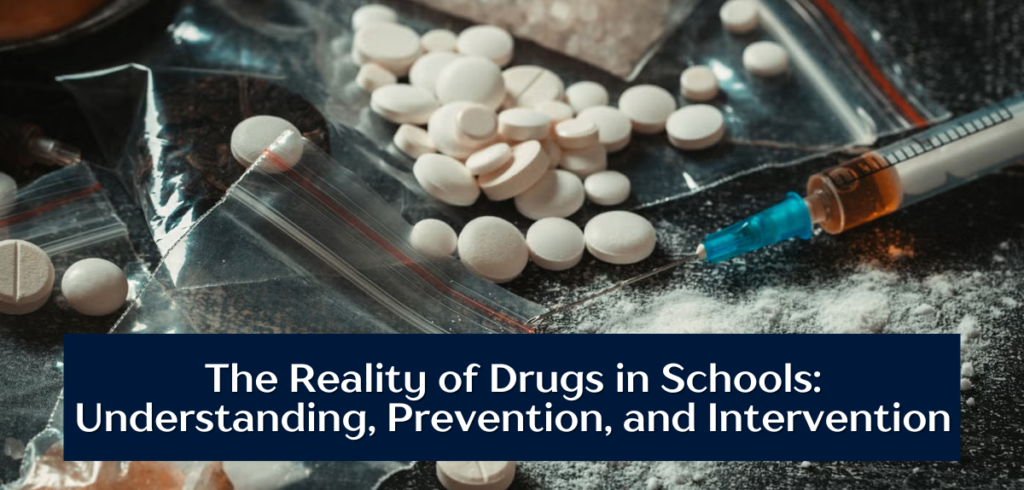Introduction:
Drug use in schools has long been a problem that has an impact on communities, families, and kids. The prevalence of drugs in educational environments presents considerable issues, ranging from prescribed prescriptions misused for recreational purposes to illicit substances. This blog explores the causes, effects, preventative tactics, and intervention strategies of drug use in schools.
Understanding the Issue:
There are a number of reasons why drugs are so common in schools. Student drug experimentation is influenced by a number of factors, including peer pressure, curiosity, cultural influences, mental health concerns, and accessibility. For some teenagers, the appeal of escaping reality or fitting in can set them on a hazardous course toward substance abuse.
Consequences:
Drug usage among kids has a variety of negative effects. Students frequently perform poorly academically, finding it difficult to focus, remember material, and finish homework. Furthermore, abusing drugs can result in behavioral problems including disobedience, violence, and absenteeism, which can disturb everyone’s learning environment.
Health Risks:
Beyond behavioral and academic ramifications, drug use carries significant health concerns. Addiction, overdose, and long-term issues with one’s physical and mental health can result from substance usage. Moreover, the risk of negative responses and emergencies is increased when medications are used or when unknown compounds are used.
Prevention Strategies:
The solution to the problem of drugs in schools is prevention. Early-starting, comprehensive drug education programs can provide adolescents the information and abilities they need to make wise decisions. The risks associated with substance misuse, refusal techniques, and constructive coping methods ought to be included in these programs.
Drug attractiveness can also be decreased by creating a supportive school climate where students feel included, respected, and understood. Strong bonds between educators, counselors, and students promote candid conversation and prompt action in the event that substance misuse symptoms appear.
In measures to prevent, parental engagement is equally essential. A unified front against substance addiction is achieved through educating parents about the warning indications of drug use, offering resources for support and advice, and encouraging family communication.
Intervention Measures:
Some adolescents may continue to experiment with drugs or develop serious substance use despite preventative measures. Timely assistance is crucial in such circumstances. Clear procedures should be in place in schools for identifying and evaluating students who may be at risk and directing them to the right services, including counseling or drug rehab centers.
Cooperation between law enforcement, community organizations, and healthcare practitioners improves the efficacy of intervention strategies. Coordinated efforts guarantee that students receive all-encompassing assistance that is customized to meet their requirements and address the root causes of their drug use.
Support for Recovery:
Recovery-focused strategies are essential for helping kids who are addicted to drugs. Providing peer support groups, counseling, therapy, and educational materials encourages long-term recovery and facilitates students’ effective reintegration back into the school community.
Destigmatizing mental health issues and addiction also lowers barriers to getting treatment. Establishing an environment that values empathy, comprehension, and acceptance promotes resilience and pushes people to put their health first.
Conclusion:
Drug use in schools is a complicated problem with wide-ranging effects. Schools can be a key player in resolving drug-related issues by comprehending the underlying causes, putting preventive measures in place, intervening successfully, and promoting recovery. Establishing safe, healthy, and drug-free learning environments for every kid requires cooperation, education, and empathy as fundamental building blocks.

